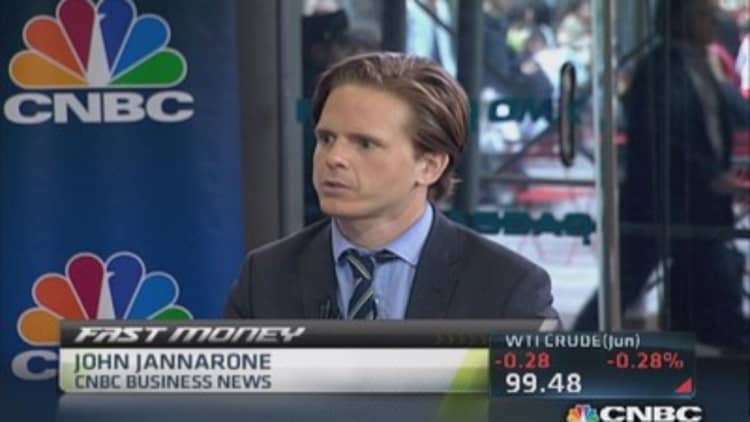
As the wait for Alibaba's New York initial public offering drags on, some other high-flying Chinese technology companies are poised to get a U.S. listing first. Investors who consider owning such shares should be sure to read the fine print.
Consider JD.com, which has filed a prospectus for its U.S. listing and may make its debut in the coming weeks. JD has a few businesses, including an online marketplace that matches buyers and sellers, similar to Alibaba's main operations.
But Alibaba is in a different league. According to Sanford C. Bernstein & Co., Alibaba's marketplace division had over $250 billion in gross merchandise value in 2013. JD, meanwhile, says it had $5.3 billion in gross merchandise value from its online marketplace division.
Read MoreWhy China's e-commerce giant could have a problem
Indeed, JD's much larger business is its online direct sales division, which looks more like Amazon than Alibaba. It accounted for the remaining $15.4 billion of JD's gross merchandise value last year.
Unfortunately, direct sales businesses tend to have very thin margins. And JD is in an especially tough spot because 80 percent of its revenues were from direct sales electronics and home appliances in 2013. Such items tend to be very commodity-like so retailers are forced to sell them at the lowest possible prices.
That challenge is apparent in JD's financial results. The company posted an operating loss of $96 million in 2013 on revenues of $11.5 billion. It also incurred losses in the previous two years. Alibaba, in contrast, tends to generate operating margins north of 50 percent. A spokesperson for JD declined to comment, citing a quiet period under IPO listing rules.
Read MoreWhy Alibaba probably won't take the US by storm
Of course, JD appears concentrated on gaining market share, so it's reasonable to focus more on revenue than profits for some period of time.
Yet JD's profit outlook may be weaker than meets the eye. What's concerning is that the company uses some accounting methods, albeit legal, that can potentially make costs look artificially low.
The first is "weighted average cost" accounting, which JD uses for valuing inventory. That approach allows JD to use the average cost of goods held in inventory when it books a sales transaction. Other companies like Amazon employ a "first-in first-out" method using the cost of the oldest item it holds.
Why does this matter so much? Prices for consumer electronics tend to decline steadily, especially for items like LCD televisions. Using an average cost rather than the cost of the oldest good can therefore have a meaningful impact. That's all the more important given the already-low margins on such products.
The second method relates to rebates and subsidies that JD receives from certain suppliers. JD accounts for the rebates as a reduction of cost of goods sold and will sometimes estimate them even before they are paid by suppliers.
Read MoreTwitter a grim canary in coalmine for IPOs
While such an accounting approach might work out if a company could predict rebates precisely, JD's prospectus acknowledged a "material weakness" in its ability to track and record rebates during 2012. The good news is that JD has taken steps to improve those control procedures since the end of 2012.
Still, the company acknowledged another material weakness. As of the end of 2013, the company and its independent accounting firm identified a material weakness relating to a "lack of sufficient financial reporting and accounting personnel with appropriate knowledge" of U.S. accounting standards. The company has allocated more resources to improve oversight and still plans to hire additional staff.
Ultimately, investors may be tempted by JD's marketplace business, which nearly doubled in volume in 2013 and may well continue to grow apace. But at a small fraction the size of Alibaba, it looks like the underdog. And in the meantime, potential losses in JD's direct sales business could remain a weight. Investors with dreams of profits from Chinese e-commerce may be better off shopping elsewhere.

